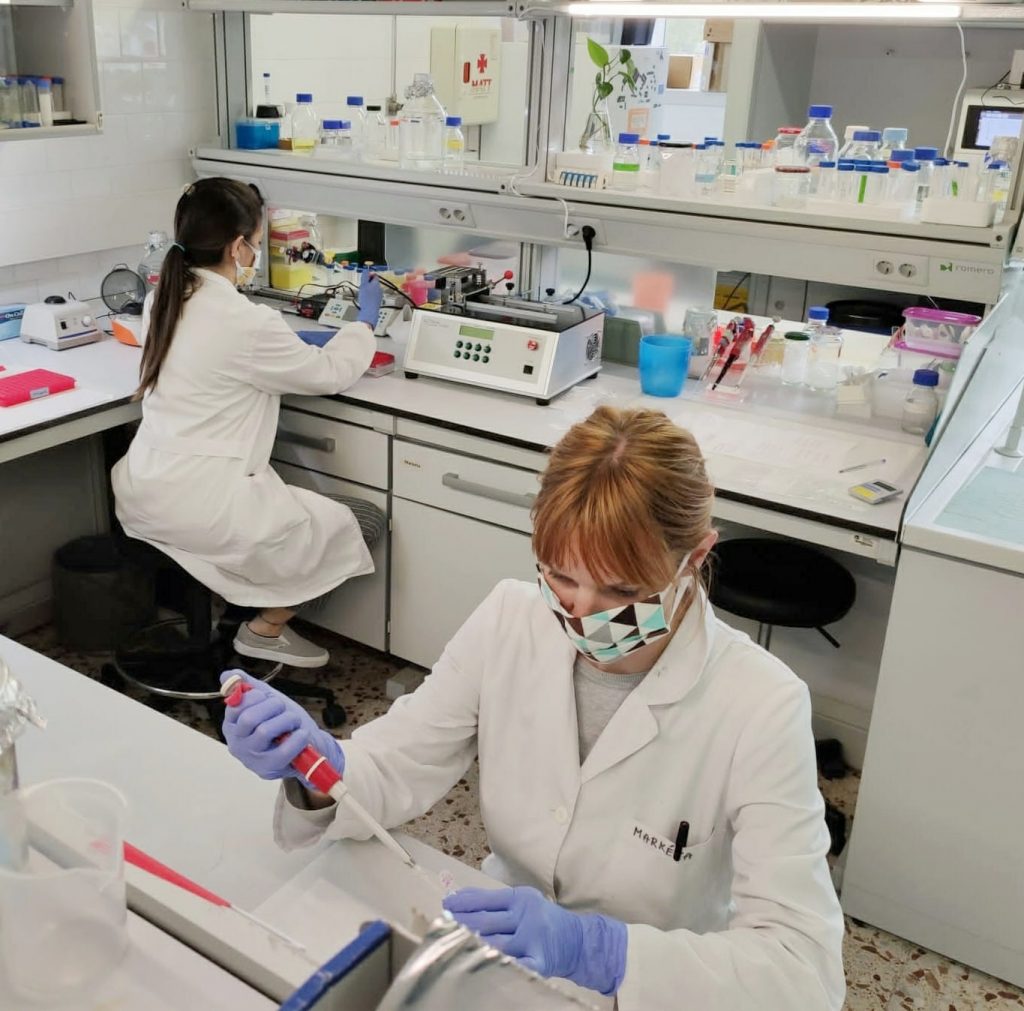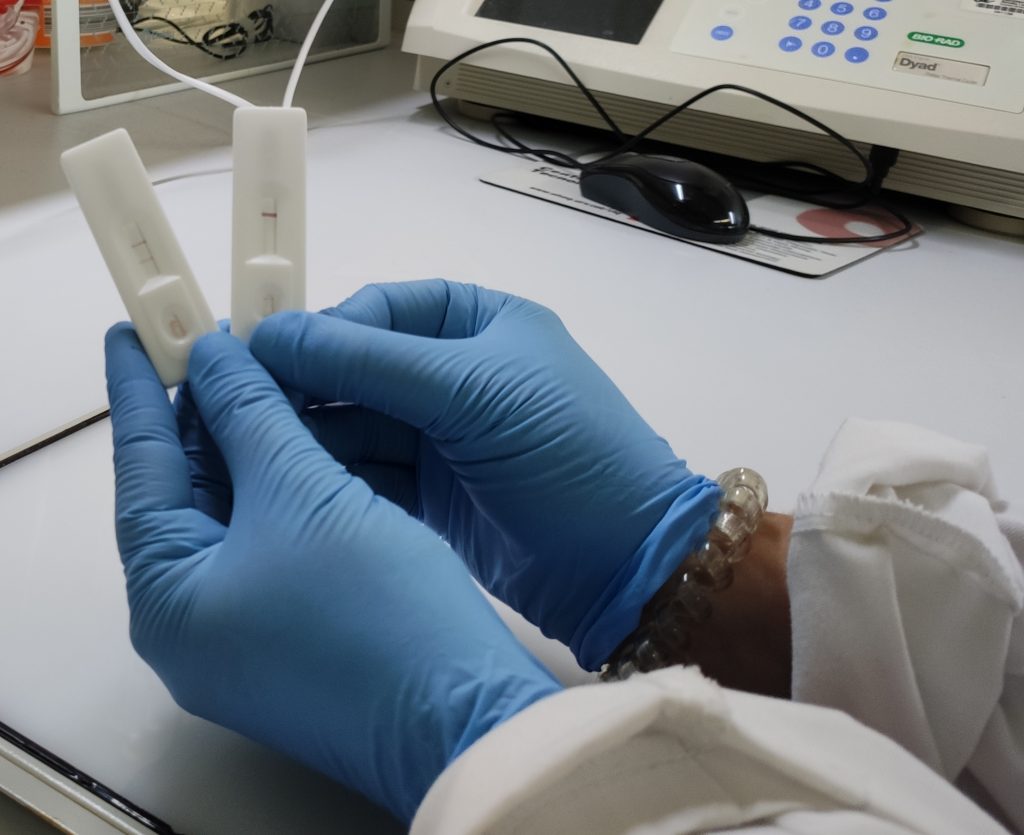08/06/2020
The new rapid diagnosis test for SARS-CoV-2 will be ready for manufacture by the end of July
Large scale testing of the device is underway; in only 15 minutes and with just a single pinprick of blood it can determine with 100% reliability if a person has the disease or if they have developed antibodies to it

Large scale testing of the device is underway; in only 15 minutes and with just a single pinprick of blood it can determine with 100% reliability if a person has the disease or if they have developed antibodies to it
By the end of July, the new rapid diagnosis device for SARS-CoV-2 will be ready, which with a mere pinprick of blood and a waiting time of around 15 minutes will provide the maximum amount of information about the inividual’s COVID-19 status, including whether they have the disease (IgM), if they have recovered from it and developed antibodies (IgG) or if they do not have it and never have. From that moment the prototype will be ready for mass production. The best thing about this device is its reliability because it eliminates the possibility of false positives or false negatives, which is one of the problems with the serological tests used to date. “We use a protein that can capture antibodies , which means that this test is more sensitive and specific and does not give false results”, explains Ciara O’Sullivan, who leads the Interfibio research group of the Universitat Rovira i Virgili, where they have developed the test in less than three months using nanoparticles of gold joined to antibodies.
The test costs approximately one euro and “also helps us to monitor patients and see if after one, two or three months they are still immune”, adds the researcher. After a validation process with patient samples from the Joan XXIII University Hospital in Tarragona, the test will be validated on a large scale with other hospitals in Catalonia and Spain, a process that will conclude by the end of July, when the test will enter into mass production.
Similar to a pregnancy test
Up to now, the most commonly used method for diagnosing SARS-CoV-2 infections is real time reverse transcription polymerase chain reaction using specific virus primers. But these RT-PCR molecular tests have certain limitations such as the fact that the test takes a long time to give a result, it is expensive and it has to be administered by trained individuals.
The new device is very similar to a pregnancy test or to those used by diabetic people. A pinprick is administered to the fingertip and a drop of blood is collected and placed on the reactive strip. If a red stripe appears, it means the person is IgG positive, that is, they have already had the infection. If a blue stripe appears, the infection is active (IgM positive). “Initially the test will be used by healthcare staff, but it is so easy that in the future it will be sold in pharmacies for use by anyone”, says Ciara O’Sullivan.
In addition to Ciara O’Sullivan, the development of this diagnostic device has involved a research group made up of Míriam Jauset, Vasuola Skouridou, Marketa Svobodova, Mary Luz Botero and Ivan Magriñà. It is funded by the Carlos III Health Institute through the COVID-19 Fund to promote projects that increase short term understanding of the virus and of how to manage it.
More news about: Coronavirus, Covid-19

